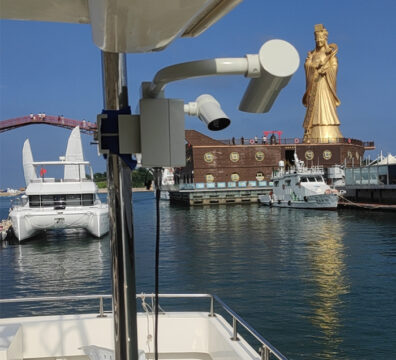APPLICATION

Ship visibility monitoring
Beijing Tsingsense Technology
The vessel visibility monitoring project is a successful example of the deep integration of the Internet of Things, big data technologies, and traditional water traffic safety management. By deploying “sensory nerves” and building an “intelligent brain,” it bridges the “last mile” of early warning information dissemination, effectively addressing poor visibility, a core challenge for water traffic safety. This project provides replicable and scalable advanced experience for traffic safety management in complex inland waterways and coastal waterways across China and globally.
1. Monitoring Station Location:
15 front-end visibility monitoring stations have been deployed along key locations of the waterway, including bridges (such as Sutong Bridge, Jiangyin Bridge), lighthouses, shore markers, foggy curves and estuaries.
2. Hardware Components:
Main sensor: Use a forward scatter visibility meter. This device accurately calculates the meteorological optical range (MOR) by measuring the light intensity of a certain volume of air scattered between the transmitter and receiver. It offers high accuracy, low energy consumption, and no need for a long baseline, making it ideal for fixed-point installations.
Auxiliary Sensors: Integrated wind speed and direction sensors, temperature and humidity sensors, and barometric pressure sensors provide comprehensive meteorological information to assist in analyzing fog causes and trends.
Data collector: Responsible for collecting, processing, and temporarily storing all sensor data.
Communication Unit: Utilizes 4G/5G wireless transmission (primary) and fiber optic network (standby) to encrypt data and transmit it to a central platform.
Power Supply System: Uses mains power, equipped with solar panels and battery packs, ensuring uninterrupted operation for 72 hours in extreme weather conditions.
